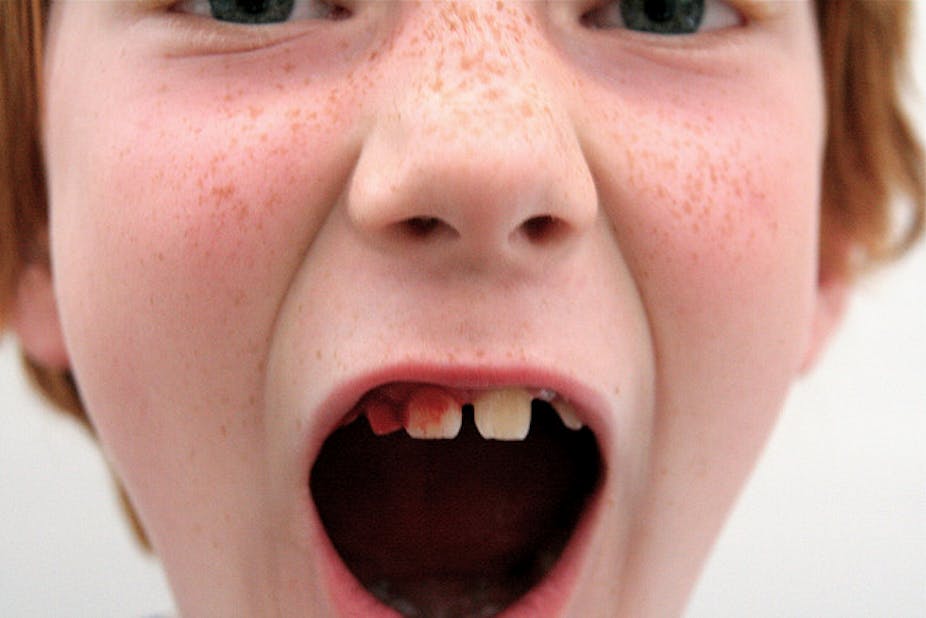It’s common enough for a tooth to be knocked out on the footy field, in the playground, during a fight, or even a fall. The blood, shock and pain can easily cause you to panic but, as with most things, keeping calm will help.
Theories abound about the best course of action, but the first thing to remember is you can save an adult tooth that has been knocked out. And the sooner you act, the better. The likelihood of successful re-implantation diminishes dramatically after about 30 minutes.
The first thing you need to do is to look for all the teeth or fragments of teeth that have been knocked out. This might mean searching a playing field or other teammates’ or opponents’ clothes – and sometimes even their heads, if it’s been that sort of a collision!
Once you’ve found the tooth, be careful of the way you handle it – it needs to be picked up by the tooth crown and not by the tooth root.
Rinse it gently and briefly with saline (which can usually be found in first aid kits), or, failing that, with milk or under gentle running water. But be sure not to scrub the tooth – you’re just trying to wash away any obvious dirt or other fragments.
Now, this advice often comes as a surprise, but what you should do next is put the tooth back in the gap of your mouth where it has been knocked out. This is called re-implanting and is the best course of action even if the crown is broken. Take care to re-implant it with the correct surface outwards; if possible, compare the tooth to the one next to it for a guide.
Re-implanting a front tooth isn’t likely to cause pain because the area will still be numb following the local trauma. But if you can’t re-implant the tooth because of pain, damage, or you’re about to undergo a general anaesthetic, there are a couple of options for protecting the tooth.

Place the tooth into a small container or plastic wrap and add some milk or saline to keep the root from drying out.
Milk is a good medium for storing knocked-out teeth because cells from the root surface don’t swell up and burst as they do when placed in water. It contains proteins that keep a constant acid-to-alkaline ratio, anti-bacterial substances, as well as sugars to keep cells growing.
If milk isn’t available, saliva is better than nothing, so place the tooth inside the person’s mouth, next to their cheek. Just make sure they don’t swallow it – keeping their teeth together will help.
Remember that any storage is intended only to be for up to about six hours while you’re on the way to the dental clinic. The dentist will then stabilise the tooth and review the situation for ongoing treatment: a root filling will be required once the trauma and soft tissue swelling heals.
When a tooth has been knocked out, the nerves, blood vessels and supporting tissues are damaged, too. The nerves and blood vessels can’t always be repaired so root canal treatment will be necessary in most cases.
The good news is that the ligament connecting the tooth to the bone can reform once it’s put back into place, as long as it’s re-implanted soon after the trauma.
You’re never going to eliminate bumps and knocks in organised sport but wearing a mouth guard will reduce the likelihood of suffering tooth and soft tissue damage when, or if, that next fall occurs.
Further reading: Dental trauma guide

